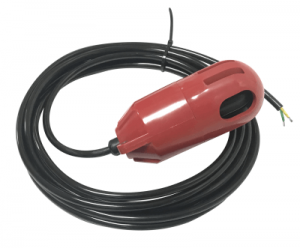In the vast and mysterious realm of the oceans, scientists and researchers rely on advanced technologies to unravel the secrets hidden beneath the waves. One such crucial technology is the piezo hydrophone, a specialized device designed to detect underwater sound waves. In this blog post, we will explore the fascinating applications of piezo hydrophones in marine science and how they contribute to our understanding of the ocean environment.
Monitoring Marine Mammals
Piezo hydrophones play a pivotal role in studying and monitoring marine mammals such as whales, dolphins, and seals. These animals communicate through complex vocalizations and calls that travel long distances underwater. Hydrophones can detect these sounds, helping researchers study behavior patterns, migration routes, and even assess population health.
Studying Underwater Geology
The ocean floor holds clues to Earth's geological processes, including volcanic activity, seismic events, and the movement of tectonic plates. Piezo hydrophones are used in hydroacoustic surveys to listen for underwater earthquakes, volcanic eruptions, and the rumblings of submarine landslides. By monitoring these sounds, scientists can better understand the dynamics of underwater geology and seismic events.
Tracking Marine Vessels and Activities
In marine environments crowded with commercial ships, fishing vessels, and naval activities, monitoring underwater noise pollution is crucial. Piezo hydrophones are deployed in acoustic monitoring networks to track vessel movements, measure noise levels, and assess the impact of human activities on marine ecosystems. This data aids in developing strategies for marine conservation and mitigating anthropogenic disturbances.
Environmental Monitoring and Conservation
Piezo hydrophones are integral to environmental monitoring programs focused on assessing ocean health and biodiversity. By listening to underwater habitats, researchers can identify species presence based on their acoustic signatures, monitor coral reef ecosystems, detect invasive species, and evaluate the impact of climate change on marine environments.
Oceanographic Research and Exploration
Understanding ocean dynamics, currents, and temperature variations requires comprehensive data collection. Piezo hydrophones are deployed in oceanographic research to study underwater acoustics, map deep-sea environments, and investigate phenomena such as underwater turbulence, upwelling zones, and thermohaline circulation. This data aids in climate modeling, marine resource management, and oceanographic forecasting.
Anti-Submarine Warfare (ASW) Operations
In naval applications, piezo hydrophones are essential components of anti-submarine warfare (ASW) systems. These hydrophones are deployed on submarines, surface vessels, and underwater sensor arrays to detect and track enemy submarines based on their acoustic signatures. Advanced signal processing techniques enhance the capabilities of hydrophone arrays in identifying and localizing underwater threats.
Marine Renewable Energy Development
The growing interest in harnessing marine renewable energy sources such as tidal and wave energy requires extensive environmental assessments. Piezo hydrophones are used in pre-construction and post-construction monitoring of marine energy projects to evaluate their impact on marine life, including potential disturbance to marine mammals, fish populations, and sensitive habitats.
Conclusion
Piezoelectric hydrophones represent a cornerstone technology in ocean science and engineering, allowing researchers to listen to the ocean's hidden symphony and uncover its mysteries. From studying marine mammals and underwater geology to monitoring human activity and advancing renewable energy, piezoelectric hydrophones have diverse applications in ocean science and are critical to sustainable ocean management. If you have any questions about our products, please feel free to contact us.
